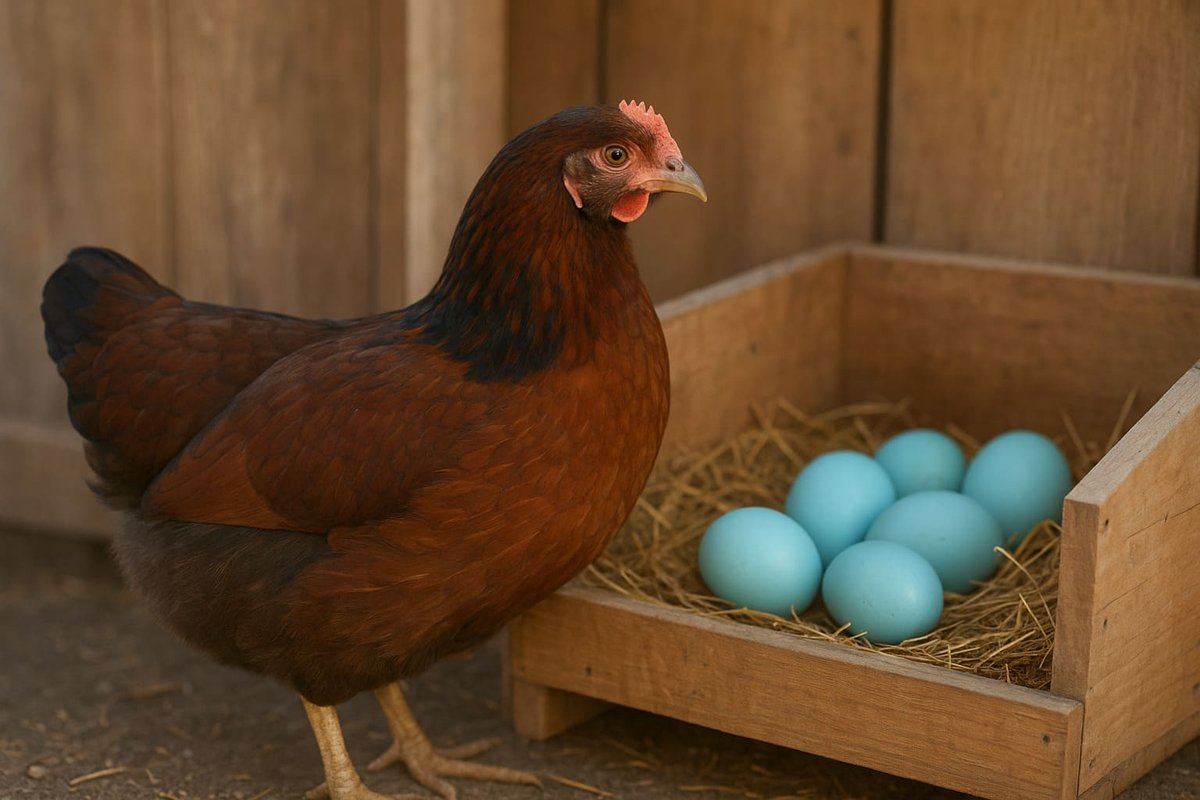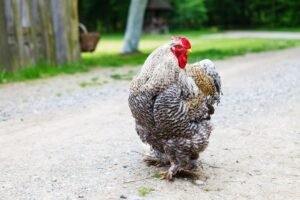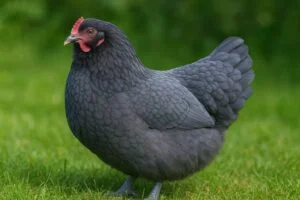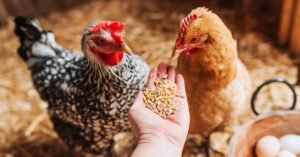The Araucana chicken breed is truly one of the most fascinating and unique birds you can add to a backyard flock. When I first heard about a chicken that lays naturally blue eggs, I was hooked. These quirky, rumpless birds from South America are more than just a novelty; they’re a heritage breed with a complex history and specific needs. If you’re captivated by the idea of collecting sky-blue eggs from your own coop, you’ve come to the right place. In this complete guide, we’ll dive into everything you need to know about their care, temperament, and the genetic quirks that make them so special. I’ll share my experience to help you decide if this rare breed is the right fit for you.
What Makes the Araucana Chicken Breed Special?
So, why are Araucana chickens so special? It really comes down to a few extraordinary traits that set them apart from any other chicken. First and foremost is their incredible ability to lay blue eggs. Unlike Easter Eggers, which are hybrids, true Araucanas are a pure heritage breed that consistently produces blue-shelled eggs, making every trip to the nesting box feel like a treasure hunt. They are also excellent foragers, considered a dual-purpose chicken for both meat and eggs, and possess a unique appearance that is impossible to miss.
Beyond their eggs, their appearance is unmistakable. They have two unique physical traits: they are rumpless, meaning they have no tail bone or tail feathers, and they sport ear tufts, which are bizarre feathers that grow from a skin pedestal near their ears. This combination of blue eggs, no tail, and funny ear tufts makes the Araucana chicken breed one of the most unique in the poultry world. Their rarity, driven by challenging genetics, only adds to their allure for dedicated poultry keepers.
These unique qualities make Araucanas a captivating breed, but their story is just as interesting as their appearance. To truly appreciate them, it helps to understand their origins deep in South America.
Quick Facts: Araucana Chickens
- Origin: Chile, South America
- Conservation Status: Critical (U.S.). Source: The Livestock Conservancy
- Egg Color: Blue to blue-green
- Annual Production: 150-200 eggs
- Weight (Large Fowl): Cock 5 lb; Hen 4 lb
- Lifespan: 6-8 years
- Temperament: Docile, friendly, curious
- Key Features: Rumpless, Ear Tufts, Blue Eggs
Araucana Chicken Breed History & Origin
The story of the Araucana begins in the Araucanía region of Chile, long before their introduction to the wider world. The breed was developed from two distinct types of chickens kept by the Mapuche Indians, an indigenous people known for their fierce independence and rich culture. These foundation birds were the Collonca, which were rumpless and laid blue eggs, and the Quetro, which had ear tufts but laid brown eggs. For the Mapuche, these chickens were not just livestock; they held cultural significance.
The credit for developing the breed as we know it today goes to Dr. Reuben Bustos, a Chilean poultry expert in the early 20th century. He encountered these unique birds and recognized their potential, selectively breeding the Collonca and Quetro to create a single chicken that combined both the rumpless and tufted traits, along with the coveted blue egg-laying abilities. The breed was first described in 1914, introduced internationally in 1921, with early U.S. imports arriving around 1924 Source: The Livestock Conservancy.
From this rich history, a chicken with truly one-of-a-kind physical traits emerged. Let’s take a closer look at what makes an Araucana look like an Araucana.
Unique Physical Characteristics of Araucana Chickens
When you see an Araucana, you know it. Their appearance is governed by some very specific and unusual genetic traits that go far beyond simple feather color.
Rumpless Feature (No Tail)
The most striking feature is the complete absence of a tail. This isn’t just missing feathers; the Araucana chicken breed is genetically rumpless. In Araucanas, the rumpless phenotype includes absence of the free caudal vertebrae and the uropygial (preen) gland, which can affect feather maintenance, especially in persistently wet climates Source: PMC. This means they can get soaked and chilled, so it’s important to know what to do if you see signs chickens get sick in the rain.
Ear Tufts (Peduncles)
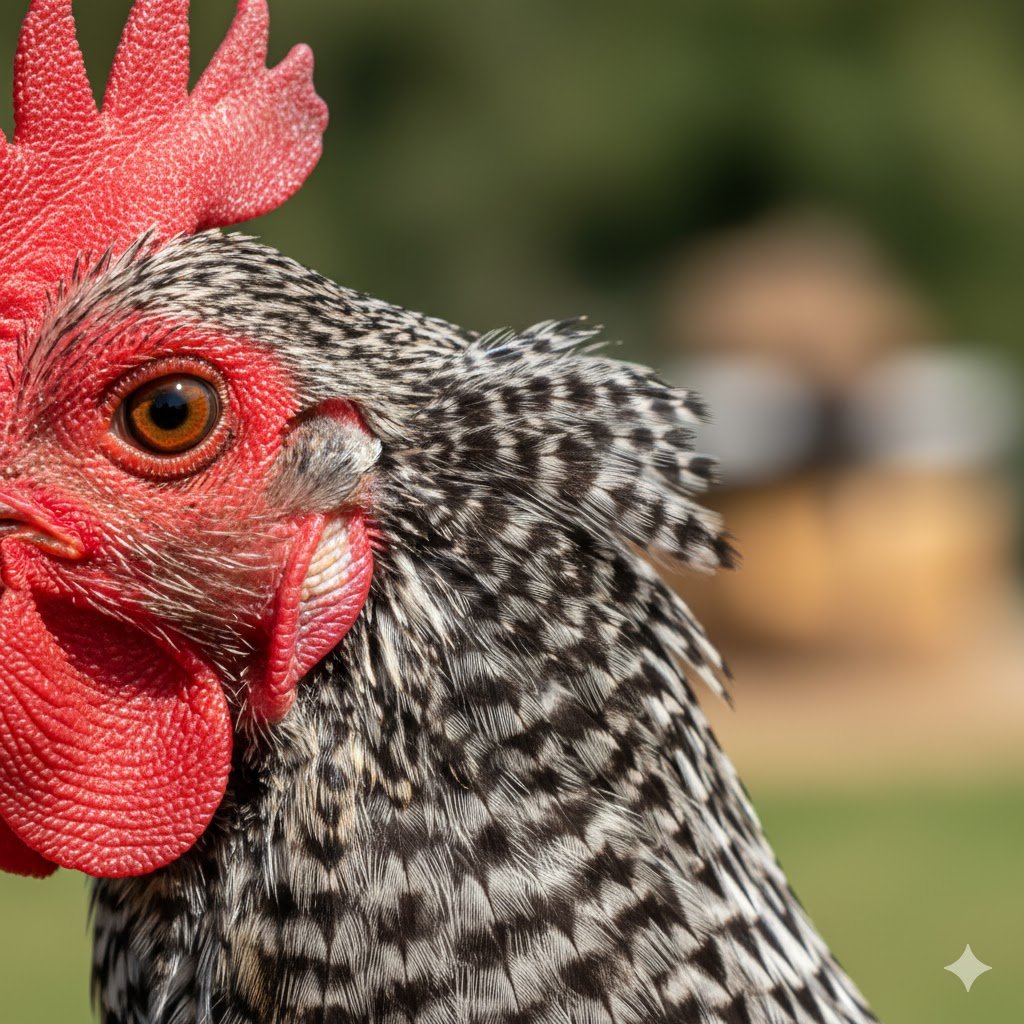
The ear tufts are perhaps their quirkiest feature. These aren’t just fluffy feathers near the ears like the “muffs” on Ameraucanas. True Araucana tufts are feathers that grow out of a flap of skin called a peduncle, located near the ear opening. The tufts can be symmetrical with one on each side, a bird might only have one, or they might be completely clean-faced. Unfortunately, this charming trait is linked to a dangerous genetic problem, which we’ll cover in detail later.
Pea Comb
Araucanas have a small, low-profile comb called a pea comb. It sits close to their head and looks like three small ridges fused together, with the middle one being slightly higher. This feature is a huge advantage in cold climates, as the small surface area is highly resistant to frostbite, making them surprisingly cold hardy breeds.
Araucana Chicken Breed Colors
The American Poultry Association (APA) recognizes five standard varieties for the Araucana chicken breed:
- Black
- White
- Black Breasted Red
- Golden Duckwing
- Silver Duckwing
APA-recognized Araucana varieties in the U.S. are Black, White, Black Breasted Red, Golden Duckwing, and Silver Duckwing; standard weights are Cock 5 lb, Hen 4 lb Source: Araucana Club of America.
Of course, the most famous color associated with this breed isn’t on the chicken itself, but in the nesting box. Now, let’s talk about those beautiful eggs.
Araucana Chicken Egg Color: What Color Eggs Do Araucanas Lay?

Araucanas lay blue to blue-green eggs because an endogenous retroviral insertion (EAV-HP) up-regulates the SLCO1B3 gene in the shell gland, transporting biliverdin-based pigments into the shell. The blue extends through the shell layer, so the inside is blue as well Source: PubMed.
There’s a common myth that blue eggs are healthier. This is false. The nutritional content of an egg is determined entirely by the hen’s diet, not her breed or shell color. A blue egg from a healthy, pasture-raised Araucana is just as nutritious as a brown or white egg from a similarly raised hen.
Araucana Chicken Eggs: Production, Size, and Myths
While their eggs are beautiful, Araucanas are not powerhouse producers. They are considered a dual-purpose chicken with a moderate laying output of 150-200 eggs per year Source: The Livestock Conservancy. This averages out to about 3-4 eggs per week during their peak. They typically start laying, or reach their point of lay, around 20-24 weeks of age.
Factors Affecting Egg Production
Several factors can influence their laying performance:
- Nutrition: A quality layer feed with 16-18% protein and balanced calcium is essential. You can learn more in this ultimate guide to calcium for chickens.
- Stress: A calm environment is key. Stress from predators or overcrowding can cause a hen to stop laying. A good predator deterrent is crucial.
- Seasonal Changes: Production will naturally slow in the winter as daylight hours decrease.
- Broodiness: Araucana hens have a tendency to go broody, meaning they’ll stop laying to sit on a clutch of eggs.
Araucana Chicken Temperament
One of the best things about the Araucana chicken breed is its temperament. They are generally docile, friendly, and curious birds Source: The Livestock Conservancy. They are active foragers and enjoy exploring, so they thrive in a free-range or spacious backyard flock environment.
Behavior with Humans
Araucanas are known for being calm and easily handled, especially when raised from chicks vs adult hens. They are intelligent birds and can become quite personable, often following their owners around the yard out of curiosity. While not typically “lap chickens,” they are tolerant of interaction and are a good choice for families with older children who know how to handle animals gently.
Interaction with Other Breeds
They integrate well into a mixed flock and are not usually bullies or the victims. Their active and confident nature allows them to hold their own. The Araucana rooster is also known for being relatively calm and a good flock protector without being overly aggressive towards humans.
Araucana Chicken Breed Size & Weight
Araucanas are a standard-sized, lightweight breed with a compact and upright posture. Standard weights according to the APA are Source: Araucana Club of America:
- Large Fowl: Cock 5 lb; Hen 4 lb; Cockerel 4 lb; Pullet 3.5 lb.
- Bantam: Cock 28 oz; Hen 26 oz; Cockerel 26 oz; Pullet 24 oz.
Their smaller size means they eat less feed compared to larger dual-purpose breeds.
Araucana Chicken Lifespan
With proper care, the average lifespan for an Araucana chicken is 6-8 years, and some can live even longer. Like most heritage breeds, they are generally robust. A high-quality diet, a secure coop free from predators, and clean living conditions can help them live a long, healthy life.
What Is the Lethal Gene in Araucana?
The ear-tuft trait is controlled by a dominant gene with reduced penetrance in heterozygotes. Homozygotes (Et/Et) are usually embryonic lethal around days 17–19. Even Et/+ embryos show elevated late-stage mortality; one study reported ~41.6% embryonic loss among tufted heterozygotes. Practically, tufted × tufted matings yield about 25% lethal (Et/Et), ~50% tufted (Et/+), ~25% clean-faced, with realized hatch rates lower than simple Mendelian expectations Source: PubMed.
Pros and Cons of Araucana Chickens
Thinking about adding them to your flock? Here’s a balanced look at the advantages and disadvantages.
Advantages (Pros)
- Beautiful Blue Eggs: The top reason people seek them out. The novelty never wears off.
- Friendly Temperament: They are docile, curious, and make great, personable backyard pets.
- Cold Hardy: Their pea combs and sturdy build make them excellent for colder climates.
- Unique Appearance: A true conversation starter and a beautiful, quirky bird to watch.
- Good Foragers: They love to search for their own food, which can lower feed costs.
- Dual-Purpose Capability: While not large, they are serviceable for both eggs and meat.
Disadvantages (Cons)
- Conservation Status: Critical (U.S.): Very difficult to find true, quality breeding stock.
- Low Hatch Rates: The lethal tuft gene causes high embryo mortality.
- Expensive to Purchase: Rarity and breeding challenges drive up the price.
- Breeding Challenges: Not a breed for beginner breeders due to complex genetics.
- Missing Preen Gland: Can struggle to keep feathers waterproofed in wet conditions.
- Fertility Issues: Rumplessness can complicate mating; some breeders practice vent feather trimming.
Araucana vs Ameraucana vs Easter Egger: Key Differences
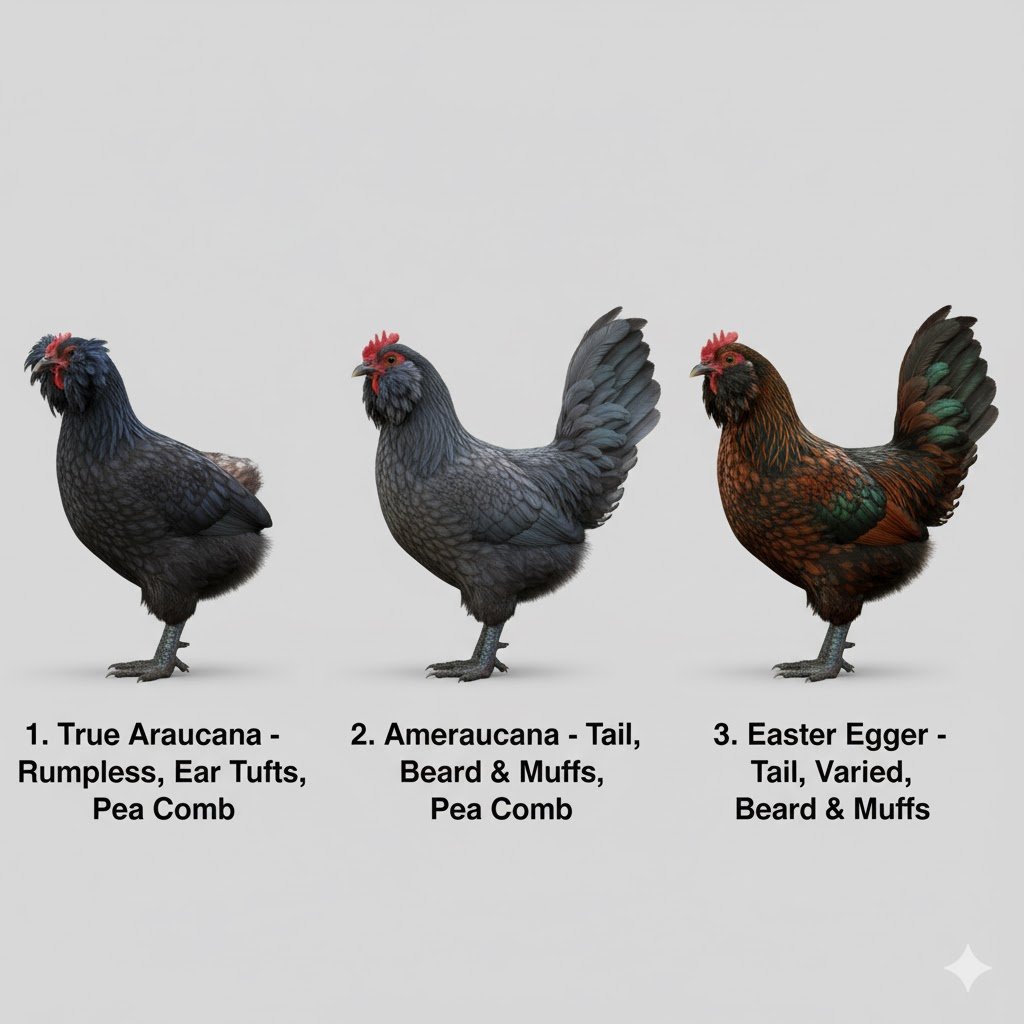
There is a huge amount of confusion between these three blue egg layers, as many sellers mislabel Easter Eggers. Here’s how to tell the difference:
| Feature | True Araucana | True Ameraucana | Easter Egger (Hybrid) |
|---|---|---|---|
| Tail | Rumpless (no tail) | Has a full tail | Has a full tail |
| Facial Feathers | Ear Tufts | Beard and Muffs | Beard and muffs |
| Comb | Pea Comb | Pea Comb | Can have any comb type |
| Egg Color | Always Blue | Always Blue | Blue, green, olive, cream |
| Breed Purity | Purebred (APA Standard) | Purebred (APA Standard) | Hybrid (Not a breed) |
| Availability | Extremely Rare | Rare | Very Common |
Caring for Araucana Chickens
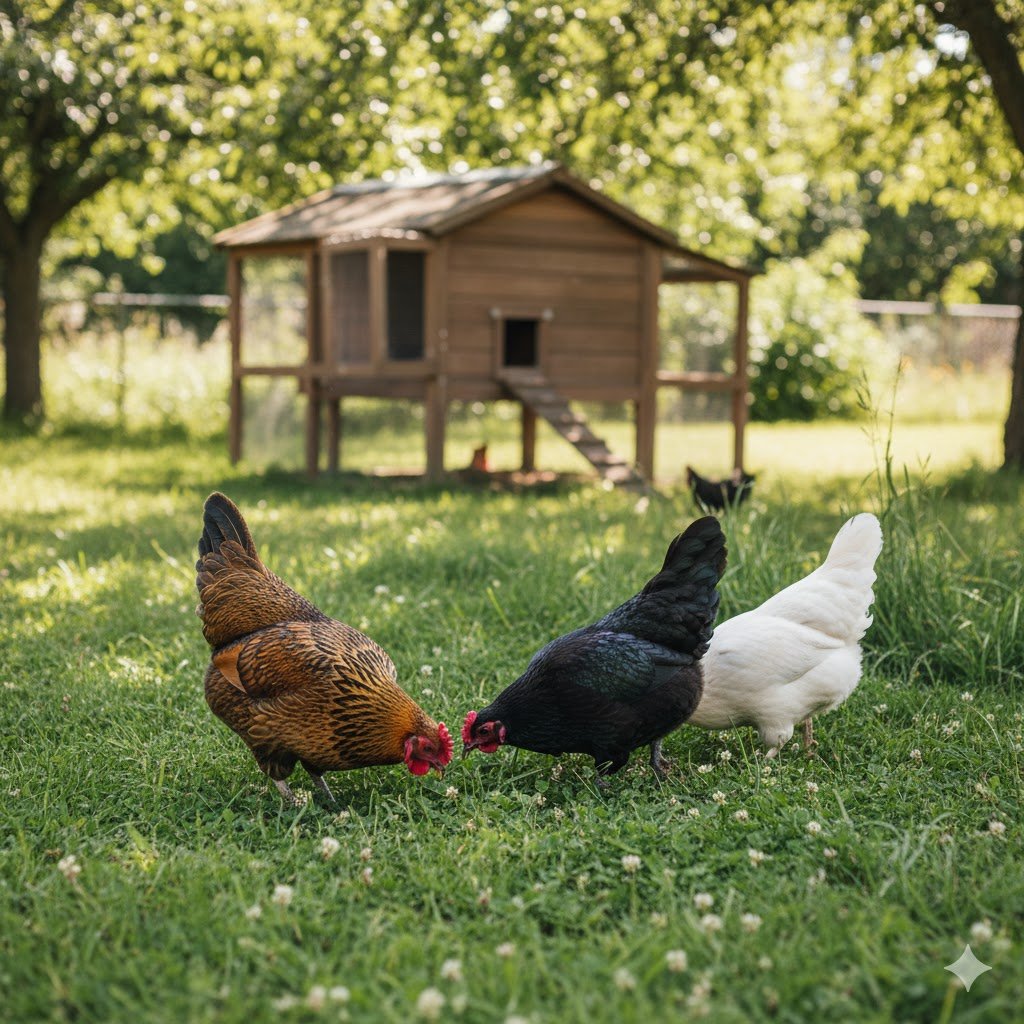
Caring for the Araucana chicken breed is similar to caring for other chickens, but with a few special considerations.
Housing Requirements
Provide at least 4 square feet of coop space per bird and 10 square feet for their outdoor run. They are active and appreciate plenty of room to roam. Standard roosts and nesting boxes (one per 4-5 hens) are perfectly suitable.
Feeding Araucana Chickens
From 18-20 weeks onward, provide a quality layer feed with 16-18% protein and supplemented calcium to support strong eggshells. As great foragers, they will benefit from being free-range chickens. Always provide fresh, clean water.
Health Considerations
The main health issue specific to Araucanas is the absence of the preen gland. Because of this, it’s extra important to provide opportunities for them to keep feathers in good condition with a good dust bath. Otherwise, they are a robust and hardy breed. Regular parasite monitoring is recommended for any flock.
Araucana Chicken Breed Price & Where to Buy
You won’t find true Araucanas at your local farm supply store. Their rarity makes them a specialty item.
How Much Do Araucana Chickens Cost?
Be prepared for a higher price tag. The Araucana chicken breed price reflects their scarcity and breeding difficulty.
- Chicks: $10 – $25+ each
- Pullets (young hens): $25 – $50+ each
- Breeding Stock: $50 – $100+ per bird for high-quality lines
Where to Find Araucana Chickens for Sale
Your best bet is to find a reputable private breeder. The Araucana Club of America maintains a breeder directory, which is an excellent place to start. Be very cautious and learn how to identify and avoid poor-quality day-old chicks. Ask breeders questions about their stock’s traits (tufted AND rumpless). If someone is selling “Araucanas” that have tails or beards, they are selling Easter Eggers. As of 2025, major hatcheries have largely discontinued the Araucana chicken breed for sale due to the hatchability challenges.
Are Araucana Chickens Right for You?
So, after all that, should you get Araucanas?
- They are best for: Experienced chicken keepers, enthusiasts dedicated to heritage breed conservation, and anyone who is passionate about the unique traits and willing to accept the challenges.
- They are not ideal for beginners.
If you love blue eggs but want an easier bird, consider Cream Legbars or Whiting True Blues.
Frequently Asked Questions About Araucana Chickens
1. Are Araucana roosters aggressive?
No, the Araucana rooster is generally known for being calm and non-aggressive, much like the hens. For those concerned about noise, they are considered one of the quietest chicken breeds for backyards.
2. Do all Araucanas have ear tufts?
Not all. Due to the lethal gene, some purebred Araucanas will hatch without tufts. However, the APA standard requires them for show.
3. Is there a bantam Araucana?
Yes, bantam (miniature) versions of the Araucana chicken breed exist. You can see a comparison of bantam vs standard in other breeds, like this guide on Silkie bantam vs standard Silkie.
4. Can Araucanas tolerate heat?
They tolerate heat reasonably well but, like all chickens, need access to shade and cool water during hot weather. Their cold hardiness is their stronger trait.
5. How can I be sure I’m buying a real Araucana?
Look for the two key traits: rumpless (no tail) and ear tufts. Buy only from a reputable breeder who can show you their parent stock.
6. Do they need different food because they lay blue eggs?
No, their dietary needs are the same as any other laying hen. A standard, high-quality layer feed is all they need.
7. Are Araucanas good mothers?
Yes, the hens have a tendency to go broody and are known to be attentive mothers.
8. Why don’t they have a preen gland?
The absence of the uropygial (preen) gland is genetically linked to the rumpless trait.
Conclusion
The Araucana chicken breed is without a doubt one of the most unique and rewarding birds in the world of poultry. From their fascinating Chilean origins with the Mapuche Indians to their sought-after blue eggs, they offer a connection to history and a daily dose of beauty. However, their rarity, genetic challenges, and higher cost mean they are a serious commitment. If you’re an experienced keeper ready for a challenge and dedicated to preserving a rare heritage breed, the Araucana might just be the perfect, quirky addition to your flock.

Oladepo Babatunde is the founder of ChickenStarter.com. He is a backyard chicken keeper and educator who specializes in helping beginners raise healthy flocks, particularly in warm climates. His expertise comes from years of hands-on experience building coops, treating common chicken ailments, and solving flock management issues. His own happy hens are a testament to his methods, laying 25-30 eggs weekly.
